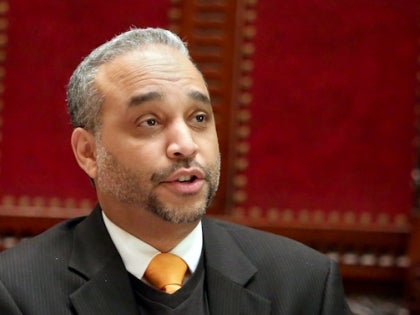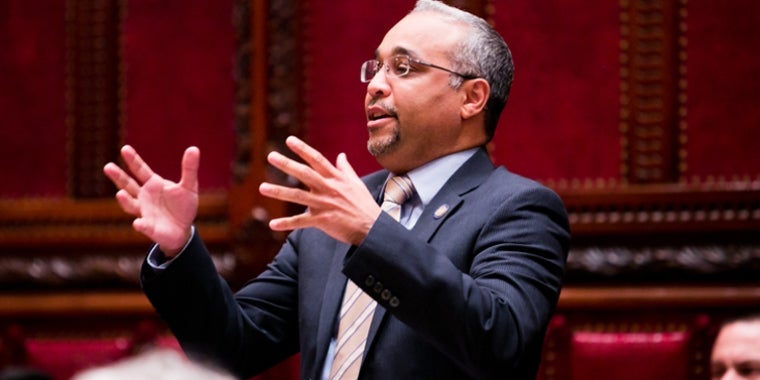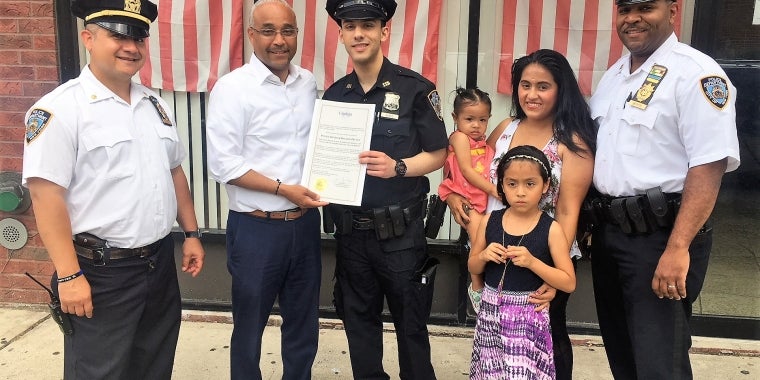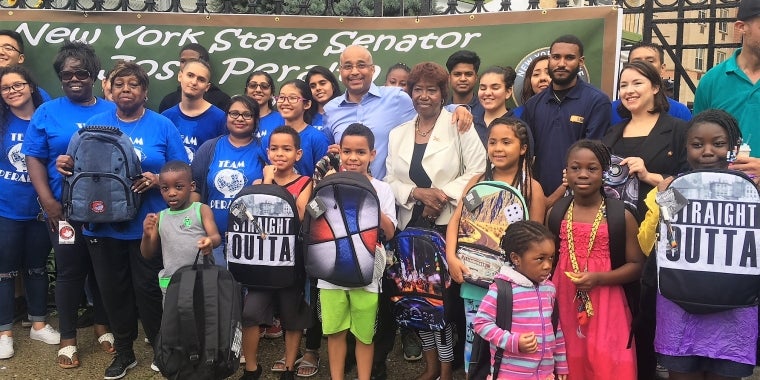
Sen. Peralta Holds Outer-Borough Taxi Plan Forum
At a public meeting on a plan he supported to allow outer-borough livery cabs, or car services, to pick up street hails, state Sen. Jose Peralta (D-Jackson Heights) played the role of conflict mediator when the session turned into a heated debate in Corona.
After a representative from the Taxi and Limousine Commission gave a presentation outlining the plan, cabbies, base operators and other stakeholders present alternately jeered and cheered in both Spanish and English during a contentious 45-minute Q- and-A.
Under the bill, passed by the state Legislature on June 24 and awaiting Gov. Cuomo’s signature, livery car drivers could buy permits allowing them to pick up street hails anywhere in the four outer boroughs, excluding airports, or within Manhattan above East 96th and West 110th streets.
This “borough taxi fleet” would be required to adopt features common to yellow taxis, including credit/debit card machines, meters and a distinctive color. Such cars would still be allowed to pick up passengers who called ahead, as is the norm.
The law would simply legitimize a practice that is already widespread, said Adrian Gonzalez, the policy analyst for the TLC who outlined the plan. Car services routinely pick up street hails, even though they’re not allowed to, and often livery car drivers rely on the money they make from these illegal pickups, Gonzalez said.
But many at the meeting seemed less than enthusiastic about the plan.
“It’s a death sentence for the bases,” said Avik Kabessa, the CEO of Manhattan-based Carmel Car and Limousine Service. Explaining that a car service driver with the street-hail permit could simply disregard any radio calls from the base and pick up hails at will, Kabessa asked, “What power will any base have over the driver?”
“He has our money, that’s why he’s so anxious,” said cabbie Pedro Rodriguez of Kabessa. The skeptical driver for Bronx-based Prestige Car Service said he was most worried about the costs of the proposed plan. Under the law, a three-year street-hail permit would cost $1,500 per driver, in addition to the expense of upgrading cars to meet the new fleet specifications.
Car service bases would also have to buy a permit, for $3,000. The city would initially issue 30,000 such driver permits and 450 base permits.
“Our ultimate goal is that as many drivers who want to participate can, and as many bases who want to participate can,” Gonzalez said.
When first proposed, the plan met with opposition from yellow taxi drivers, who currently only sporadically serve neighborhoods in the outer boroughs, according to Gonzalez’s presentation. Yellow cabbies must buy extremely expensive permits, called medallions, to operate in the city.
But the New York Taxi Workers Alliance eventually supported the bill, calling it a win for yellow cab drivers since illegal street hails will be more severely enforced under the plan, and yellow cabs are guaranteed the city’s lucrative airport areas.
But the biggest winners if the plan goes through may be customers in Queens and the outer boroughs. Getting in a car legally authorized to pick up street hails would guarantee a customer is covered by the drivers’s insurance, and meters in outer-borough car services could make haggling a thing of the past, though car services would still be allowed to charge flat rates for pre-arranged pickups.
“Many of my constituents were on board,” said Peralta on why he supported the bill. “When it’s all said and done, the driver will be able to pick up on the street without being fined.”



